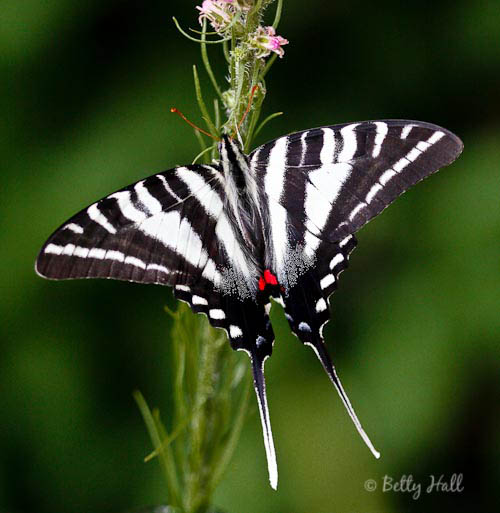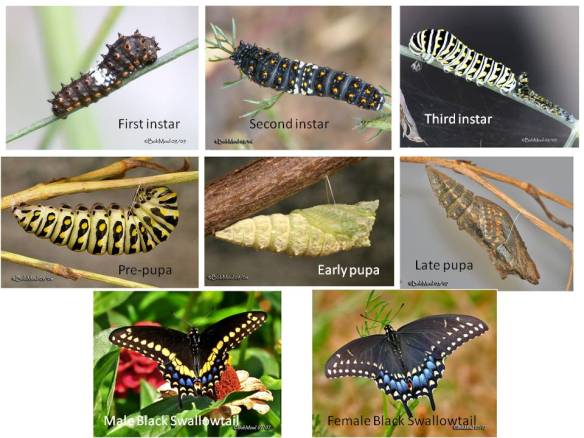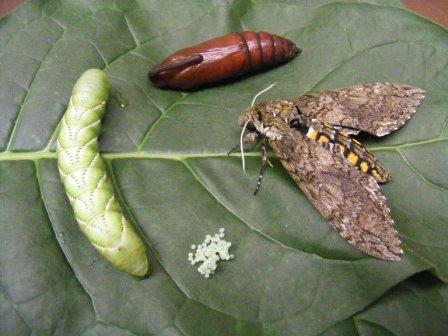Caterpillars! What’s the deal? We love some while others are the bane of our gardening existence. Caterpillars are especially difficult to reconcile with - maybe that beast which appears to be eating all of your plants will turn into something beautiful and worth protecting.
But how to know?
Here’s a run down on some of the most common caterpillars we see and our take on them. Are they pests? Are they pals? Should I hand over all of my parsley? Read on...
Monarch
Diet/Habitat: Monarchs famously only eat milkweed
Appearance: The caterpillars are large with black, yellow, and white stripes and black “whiskers” on either end. They will eventually turn into orange and black butterflies with a pattern reminiscent of stained glass.
What do I do if I find it on my plants?: Celebrate! The Monarch population is vulnerable due to their reliance on Milkweed. As more land is developed more wild milkweed is removed, minimizing the Monarch’s habitat. Monarchs will do little damage to your garden. Chances are that you saw them because you planted milkweed in your pollinator garden. Remember, while the adult butterflies will certainly enjoy the nectar from Milkweed flowers, Milkweed is necessary because it’s the only thing the larva can eat!
Zebra swallowtail
Diet/Habitat: Like Monarchs, Zebra Swallowtails have only one host plant - the Paw Paw! Because of this, they normally live in the woods, but if you have Paw Paw trees in your yard you may find them a little closer to home.
Appearance: Zebra Swallowtail larva are lime green with thin yellow and white bands. They turn into stunning black and white striped butterflies.
What do I do if I find it on my plants?: Zebra Swallowtails will only eat your Paw Paws and they won’t eat enough to do any real damage to the plant. While they are not endangered, their natural habitat is vulnerable as land is cleared and developed.
Black Swallowtail
Diet/Habitat: Plants in the Apiaceae family (carrots, parsley, Queen Anne's lace, celery, dill, fennel)
Appearance: The Swallowtail larva will begin as a tiny black caterpillar with a white band and will become a large green, black, and white striped caterpillar with orange spots. Eventually, it will form a chrysalis and hatch into a beautiful black butterfly with repeating yellow spots.
What do I do if I find it on my plants?: While neither the Black Swallowtail nor its natural habitat are endangered, they are beautiful butterflies and nice to have around. One or two in your garden won’t do much damage and we think they are worth sacrificing some old carrots or even half your parsley for... If you find more, or if you really can’t stand giving up your herbs, consider relocating them. They are happy on the common road-side plant, Queen Anne’s Lace. They are also a great butterfly to raise inside as a lesson in metamorphosis for your kids (or yourself!)
Tomato or tobacco Hornworms/5 Spotted Hawk Moths
Diet/habitat: These caterpillars are also named for their preferred cuisine - tomatoes. But they’ll eat any plant in the nightshade family ( including peppers, eggplant, and potatoes) if tomatoes can’t be found.
Appearance: Hornworms are large, muscular, and green with alternating diagonal white stripes and false eyes.
What do I do if I find it on my plants?: Hornworms can can cause immense damage. Hand-pick them off your plants and drop them in soapy water to kill them. It’s a good idea to monitor tomatoes closely throughout July and August to catch them early. However if you do find hornworms with little white egg sacks attached to their backs, do allow them to complete their cycle as those egg sacks belong to the beneficial lacewing wasp which will eventually kill the hornworm!
Cabbage Looper
Diet/Habitat: Cabbage loopers are named after their diet - they eat cabbage but also anything else in the Brassica family (kale, broccoli, collard, brussel sprouts, etc.)
Appearance: Cabbage loopers are a small lime green caterpillar. They turn into an unremarkable brown moth.
What do I do if I find it on my plants?: Don’t feel bad about kicking these guys out of your garden - cabbage loopers tend to move in herds of hungry little caterpillars. Using row covers on Spring Greens and applying BT can be effective methods for keeping them off your crops...but nothing beats hand squishing! Look for easy to miss tiny green worms on or under the leaves of any plant in the cabbage family.







